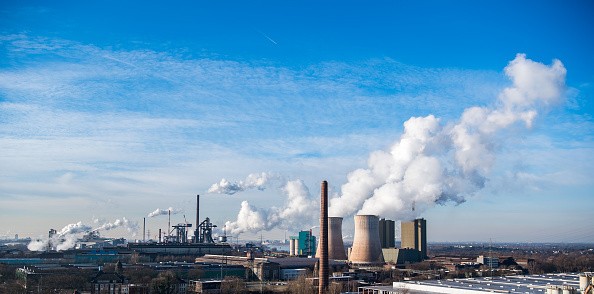After years of promoting carbon capture and storage (CCS) technology as a mid-term option for reducing carbon emissions from fossil fuel extraction, many people are worried about the quality of CCS projects now underway.

CCS
CCS is widely acknowledged as having a vital role in achieving global net-zero goals. As long as demand for oil and gas remains high, fossil fuel production will fill the void until a cleaner alternative becomes available.
As a result, developing low-carbon operations and implementing CCS technology into manufacturing processes may reduce emissions until we can completely phase out fossil fuels.
Related Article : Scientists are Saying that Removing CO2 from the Atmosphere is "No Longer Optional"
Skepticism

After a few years of the enormous CCS boom, there is now a lot of doubt in the business. Recent headlines have chastised the US for wasting $1.1 billion on unsuccessful CCS initiatives. Since 2009, the United States Department of Energy (DOE) has distributed funding among 11 carbon capture projects at coal-fired power stations and industrial sites. According to a study by the Government Accountability Office (GAO), however, many were failures, with some never being built.
Aside from investing in CCS projects that never materialized, the government allegedly subsidized enterprises that failed to meet critical milestones. Many of these failed projects were coal-fired power plants, but as natural gas plants became more competitive in cost and cleaner energy, many coal plants were forced to close.
"This office will strive to verify the effectiveness of novel technologies in real-world situations at scale to pave the path toward wider acceptance and deployment," according to a DOE official.
And it's not just in the United States where CCS technologies aren't being used to their full potential. A project in Canada that was once heralded as the future of CCS is now being scrutinized. Shell is operating a carbon capture, and storage project in Alberta called Quest, helping to decarbonize the region's oil sands operations.
Shell received government funding for the facility's development, including $120 million from the Canadian government and $745 million from Alberta. It was hailed as a "thriving example" in 2020, having reached a milestone of 5 million tonnes of carbon dioxide sequestered - the equivalent of removing 1.25 million vehicles off the road. Shell was considering repeating its Quest project.
CO2 Emissions

The plant, however, is now being chastised for emitting more CO2 into the environment than it collects. This month, Global Witness produced a report demonstrating that, while the facility has collected 5 million tonnes of CO2, it has also discharged 7.5 million metric tonnes of greenhouse gases into the environment since 2015.
According to the data, just 48 percent of carbon emissions from oil sands activities were collected, significantly less than the expected 90 percent rate.
Response
Shell has reacted to Global Witness, claiming that it misunderstood the project type in question. "Our Quest plant was developed several years ago as a demonstration project to test the fundamental CCS idea while collecting about a third of CO2 emissions," a Shell representative said.
"The hydrogen projects we're proposing - like Polaris - will employ a new technology that collects more than 90% of emissions," says the company.
While CCS is critical in the transition to green, bridging the gap while oil and gas are still in great demand, governments and energy companies should spend intelligently rather than squandering money on dangerous CCS projects to fulfill ESG goals.
In Europe, the German Climate Minister stated earlier this month that carbon reductions must be tripled to attain carbon neutrality. While carbon capture and storage (CCS) may not be the best long-term option for decarbonization, it can assist in supporting low-carbon oil and gas operations in the short run.
In the case of CCS, consider that there are also successes for every failure. Equinor of Norway, for example, has been pumping carbon into a salty aquifer for more than 25 years. And, as with any new energy initiatives, there will be triumphs and disappointments, as CCS is only now becoming more widely used.
Energy companies and governments investing in the technology now have a responsibility to guarantee that they learn from early mistakes and enhance CCS operations in the future decades.
For more news update about Environmental Action, don't forget to follow Nature World News!
© 2026 NatureWorldNews.com All rights reserved. Do not reproduce without permission.





